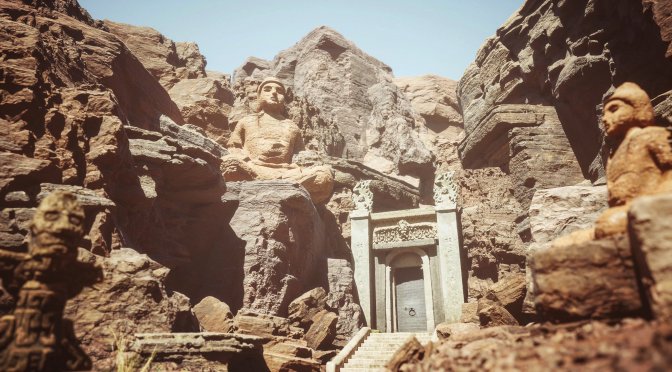Two days ago, we informed you about a recreation of the Unreal Engine 5 Tech Demo in Unreal Engine 4.25. This “remake” attempted to recreate the Temple environment from the Unreal Engine 5 demo in Unreal Engine 4.25, with real-time ray tracing. And today, 3D Archviz Specialist, Pasquale Scionti, shared a video from the final version of this project.
Unfortunately, Scionti does not plan to release this map to the public. As the artist noted, he recreated this environment for portfolio purposes. As such, we won’t be able to run this custom level on our systems and compare its performance with the one for Unreal Engine 5.
Furthermore, this project does not aim to recreate the entire tech demo. Instead, the artist focused on the Temple area. As Scionti stated, Unreal Engine 4 cannot come close to what Unreal Engine 5 achieves.
For instance, Unreal Engine 5 uses LOD 0 megascans assets with 8K textures. Such a thing is simply impossible in Unreal Engine 4. Moreover, and while the Unreal Engine 4.25 uses real-time ray tracing, the framerate was really low. Thus, this recreation can be mostly used as a cinematic sequence.
In order to create this environment, Scionti used an NVIDIA RTX 2070 Max-Q, 32GB of RAM and an Intel i9 8core CPU. And to his credit, Scionti came close to the Unreal Engine 5 environment. Trueth be told, some assets look better in UE5. Global Illumination is also better in UE5. However, the artist was able to maintain the aesthetics of the original demo.
Enjoy!
[youtube]https://youtu.be/6MTDxFVsKxQ[/youtube]

John is the founder and Editor in Chief at DSOGaming. He is a PC gaming fan and highly supports the modding and indie communities. Before creating DSOGaming, John worked on numerous gaming websites. While he is a die-hard PC gamer, his gaming roots can be found on consoles. John loved – and still does – the 16-bit consoles, and considers SNES to be one of the best consoles. Still, the PC platform won him over consoles. That was mainly due to 3DFX and its iconic dedicated 3D accelerator graphics card, Voodoo 2. John has also written a higher degree thesis on the “The Evolution of PC graphics cards.”
Contact: Email

